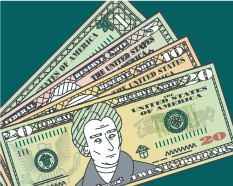For Educators

Carnival Thrills and Dollar Bills Children’s Book
"You'd be surprised" videos
You'd Be Surprised: Special Features
You'd Be Surprised: The Journey
Vocabulary Lesson Plans
Download Full Packet of Vocabulary Lesson Plans (PDF)Download Vocabulary Lists to Use With Below Lesson Plans (PDF)
Snowball Words
Download Vocabulary Lesson Plan: Snowball Words (PDF)
A Super Short Story
Download Vocabulary Lesson Plan: A Super Short Story (PDF)
Creating a Vocabulary Booklet
Students will make a vocabulary booklet of the new words they will learn in the videos.
Working with Words
Download Vocabulary Lesson Plan: Working with Words (PDF)
Matching Words and Definitions
Download Vocabulary Lesson Plan: Matching Words and Definitions (PDF)Play Money Lesson Plans
Download Full Packet of Play Money Lesson Plans (PDF)Download Play Money to Use with Below Lesson Plans (PDF)
Create a Money Graph
Download Play Money Lesson Plan: Create a Money Graph (PDF)
Going Shopping
Download Play Money Lesson Plan: Going Shopping (PDF)
Money Scavenger Hunt
Download Play Money Lesson Plan: Money Scavenger Hunt (PDF)
Shopping Spree
Download Play Money Lesson Plan: Shopping Spree (PDF)
Money Management
Download Play Money Lesson Plan: Money Management (PDF)
Restaurant Bills
Download Play Money Lesson Plan: Restaurant Bills (PDF)


